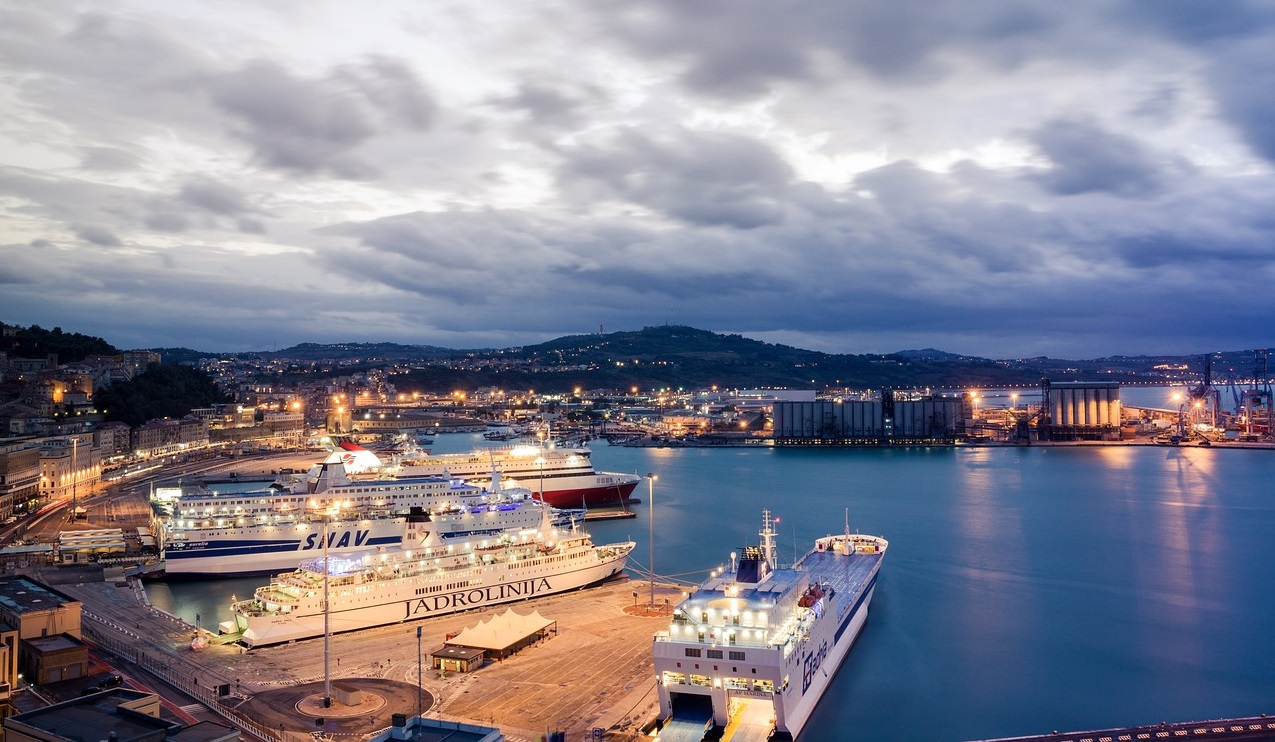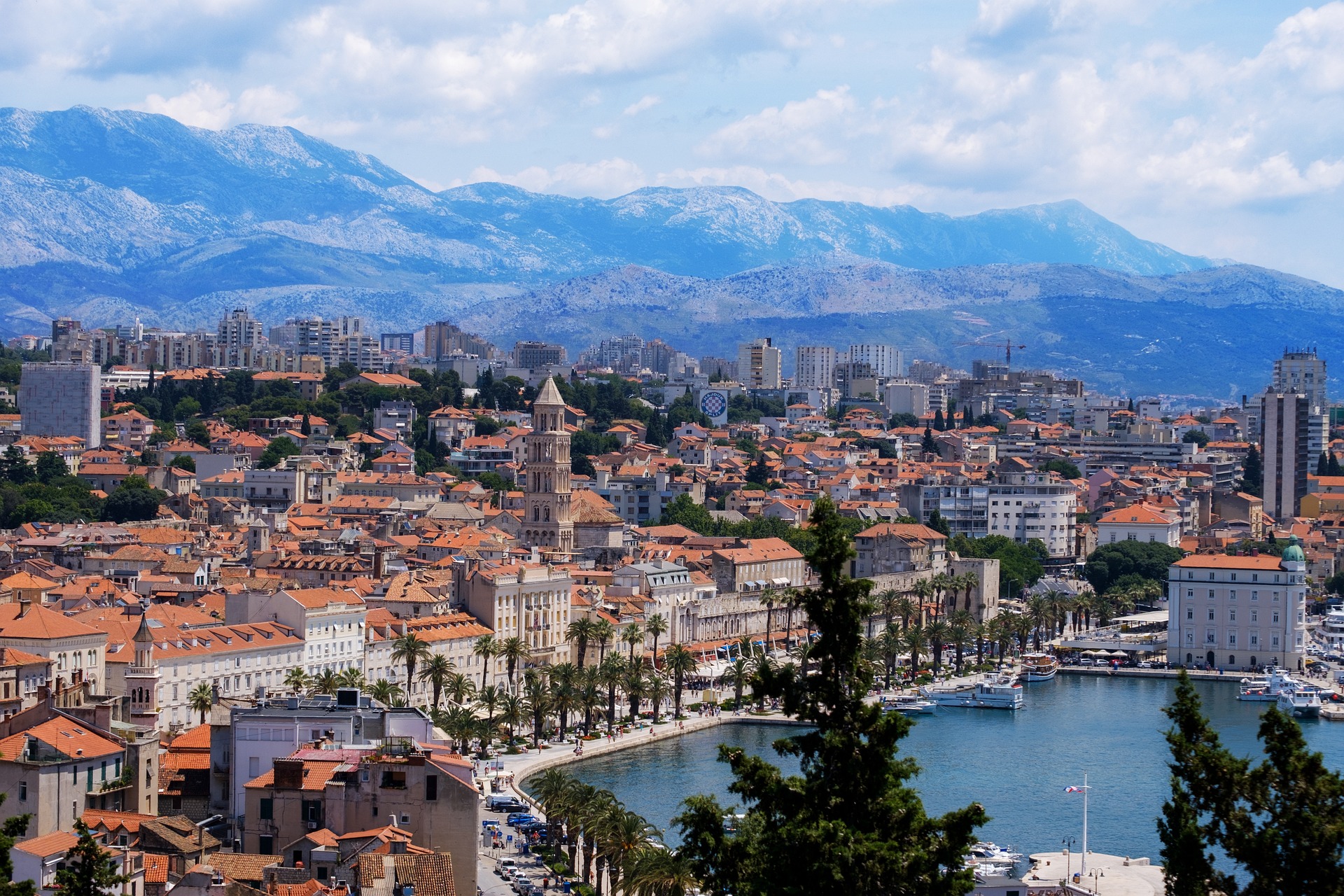Croatia
Croatia has a coastal strip on the Adriatic Sea, the Dinaric Alps mountain range in the central part and a large flat area in the east. Divided into twenty regions, the Republic has Zagreb as its capital, which constitutes an additional administrative unit. Geographical and historical macro-regions of the Adriatic coast are the Northern Croatian coast or Istria-Liburnia coast-Kvarner and Dalmatia or Dalmatia-Ragusa; inland we find Montana Croatia or Liburnia Montana-Licca, Central Croatia or Zagabrese-Moslavina-Murania and, in the easternmost area, Slavonia or Slavonia-Barania-Sirmia.
The continental coast of the Adriatic Sea of Croatia is indented, karst, 1,777.3 kilometers long, while 1,246 between islands and islets form another 4,058 kilometers. The largest islands are Cres and Krk. The coastal climate is Mediterranean. The peninsula of Istria, which can be divided into the western Istrian coast and the eastern, inland coast, together with the Kvarner form the northern coast. Kvarner is a stretch of sea that separates Istria from the islands of Cres and Lošinj, which are part of the Kvarner islands archipelago, and also includes the Faresina channel and the gulf of the city of Rijeka. The beaches of the island of Krk, the most populated of the archipelago, are almost all of gravel and pebbles, while those of Rab are sandy, often surrounded by pine forests, especially in the south.
Between the mountains and the sea, Rijeka has a historic center characterized by fortresses, medieval gates, Habsburg palaces and museums. The Korzo is the main pedestrian street. Not far from the center, both east and west, are the beaches. The wild island of Cres is full of beaches and coves. The island of Lošinj has two charming settlements, Mali Lošinj and Veli Lošinj, and Veli žal, a beautiful pebble beach in the Sun Bay.
The hills of the Učka Nature Park are close to the waterfront of the city of Opatija, which has been very visited since the times of the Austro-Habsburg Empire. The Croatian Tourism Museum is a place of interest located in three elegant buildings in the center. Behind, at the top of Vojak, the highest mountain, there is a tower from which the view does not leave indifferent. Inland opposite the Istrian one, about 15 kilometers from the coast, there is the Risnjak National Park, full of beech and fir trees but also of many other plant species, birds and mammals.
Most of the islands are located in the Dalmatia region, the sea side of over 1,500 kilometers dotted with coves, beaches and, indeed, islands. That of Pag has 302 kilometers of coastline, several protected areas, both land and sea, sandy or pebble beaches, and lots of nightlife.
The historic coastal city of Zadar is full of monuments (the Sea Organ, the Sea Gate, the Five Wells Square, among others), churches (Church of San Donato, Cathedral of Santa Anastasia and others), museums (the national museum, the archaeological one, the ancient glass museum). The New Port, in Gaženica, a city suburb, is very busy, with ferries operating on routes to Italy and the rest of Europe. Ships and high-speed boats, which depart from another terminal, closer to the center, also connect Zadar with the neighboring islands.
In the Plitvice Lakes National Park there are sixteen lakes, waterfalls, forest (Unesco heritage). Even closer to Zadar is the Paklenica karst river canyon, a national park: near Starigrad in northern Dalmatia, it is on the southern slopes of the Velebit mountain. Further south, along the Krka River, is the Krka National Park.
In Sibenik there are two buildings that have been included among the UNESCO World Heritage Sites: the Cathedral of San Giacomo, built by the Italian Dalmatian architect Giorgio Orsini, and the Renaissance fortress of San Nicolò.
Trogir also includes two islands and has a historic center full of architectural and artistic works, so much so that it is also proclaimed a World Heritage Site.
Split is the main city of Dalmatia, and the second most important in Croatia. The center is characterized by the Diocletian's Palace, which is a historical complex declared a World Heritage Site. A few nautical miles away is the island of Brac, with the famous beach of the Golden Horn (Zlatni Rat), a three hundred meter long coastline, at the end of the promontory of Bol, made of sand and pebbles, whose shape changes with the tides. On the almost always sunny island of Hvar, there is the homonymous city with an elegant center and many accommodation facilities and services, but there is no shortage of natural landscapes nearby. Even older, on the north coast of the island, is Stari Grad, where there is a UNESCO World Heritage Site: the Plain of Cittavecchia, a plain cultivated with vines and olive trees since the times of the ancient Greek colonists (4th century BC).
In Dubrovnik, the old city, developed in the 15th and 16th centuries, is another world heritage site. Known as the Pearl of the Adriatic, it is a city full of churches, monasteries, palaces. The Pelješac peninsula was also annexed to the Maritime Republic of Ragusa in 1333. Here you can find paradisiacal sandy bays, valleys, mountains. The economy is not based only on tourism but also on oyster and mussel farms and on viticulture. Not far away is the island of Korčula, with forests, beaches, villages and fine local wines.
In central Croatia and Slavonia, inland, there is not only the capital Zagreb with its districts of Gornji Grad (upper town), Donji Grad (lower town) and Kaptol. The city of Karlovac, where four rivers converge, is famous for its beer. On a bank of the Drava River stands Osijek, with the fortified citadel of Tvrda, the Slavonian Museum and the Co-Cathedral of Saints Peter and Paul.
The Lonjsko Polje Nature Park, a swampy expanse, is the largest protected wetland both in Croatia and in the entire Danube basin. It is home to horses, storks and numerous bird species.
Latest articles from the blog

How to get to Croatia by ferry
Italy is the only country from which it is possible to go to Croatia by sea. Let's see which are the ports of departure and where you can disembark.

Ferries to Croatia from Ancona
The ferries to Croatia almost all leave from Ancona, from where they leave anchor to head to Split and, only in summer, to Zadar.

How to reach Medjugorje from Italy
The ferry is the most convenient way to get to Medjugorje from Italy: cross the Adriatic Sea and continue towards your destination by car or bus.

Dubrovnik among the most beautiful places to visit at Christmas in Europe
For a Christmas trip, perhaps with the family, Dubrovnik, in Croatia, represents one of the prettiest European destinations with its attractive line-up of Christmas events.

Mali Ston Oyster Festival in Croatia
The day of European flat oysters, the most delicious, takes place in Croatia. The food and wine event is scheduled for the period of maturation of the molluscs, which are paired with fine local wines.

Food tour in Split, Croatia
Here's how to discover the cultural and gastronomic treasures of the main center of Dalmatia in one go!
